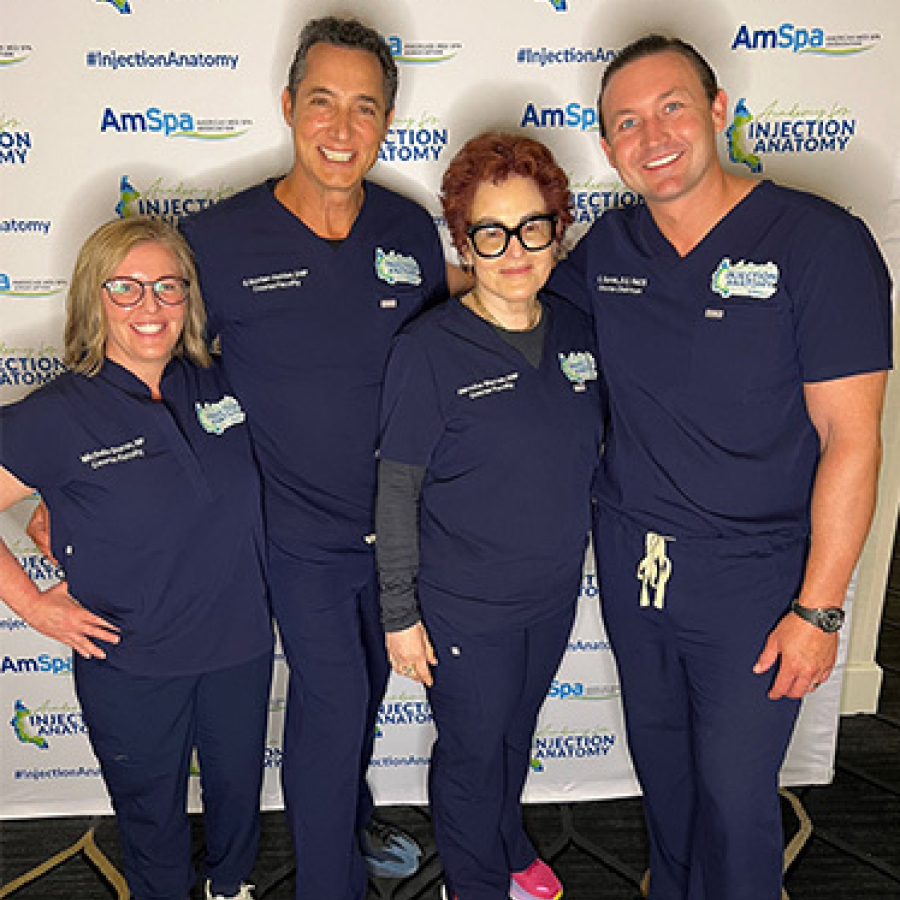
AmSpa Events
Move Beyond Excuses: People Management with Cy Wakeman
How do you get your team to come to work joyfully? Are you setting boundaries and expectations for performance in ...

Show your committment to patient safety, legal compliance and community over competition.
AmSpa members receive preferred pricing on all AmSpa live and virtual trainings.
Get the latest news and information about safe, legal practice in medical aesthetics directly in your inbox.
Get access to med spa laws, in-person and online training and more!
Posted By Madilyn Moeller, Tuesday, March 1, 2022

By Michael Meyer, Writer/Editor, American Med Spa Association
Since the laser was first developed in 1960, it has become a vital part of medical science. That part is widely known. What is less widely known, however, is that one of the pioneers of medical laser use was a dermatologist, and he would certainly be pleased to see how the advancements he helped pioneer have helped improve skin care.
Leon Goldman, MD, graduated from the University of Cincinnati College of Medicine in 1929 and joined the faculty at the university a few years later, after taking some time to study abroad. While on staff at the school's dermatology department, his primary areas of study were contact dermatitis and fever therapy for neurosyphilis. He was appointed director of the dermatology department in 1945, but it wasn't until the laser was introduced that he found his true calling.
Already 55 at the time of the laser's development, Dr. Goldman became fascinated by the possibilities presented by laser technology.
"We tried to find out what hazards there were among the personnel working with the lasers," said Goldman in a 1982 interview that appears on the University of Cincinnati's website. "Then, as we were doing it, we saw the possibilities of that as a medical instrument, but the government wasn't in the least bit interested in that, so we went to the John Hartford Foundation and told them that we had a great potential and possibility for using this in medicine, in surgery. So, they gave us several million dollars over a period of seven years, and we worked out the medical applications."

He used that money to help establish the first laboratory dedicated to laser medicine research in the world in 1961 at the University of Cincinnati General Hospital (now the University of Cincinnati Medical Center). It was in this laboratory that Goldman pioneered the field of laser medicine.
In 1963, only a few years after the introduction of the laser, Goldman published research that proved to be foundational for the fields of laser hair removal, tattoo removal and treatment of leg veins, treatments that in 2020 earned providers more than $431 million, according to the American Society of Plastic Surgeons' 2020 Plastic Surgery Statistics Report. In 1966, Goldman supervised an operation in which a tumor was removed from a patient without causing any bleeding—the laser both removed the tissue and cauterized blood vessels. This was the first procedure of its kind, and it helped to establish that lasers were potentially revolutionary surgical tools.
Goldman spent much of the rest of his career researching and using new laser technology as it was introduced to treat a variety of medical conditions. In 1979, he co-founded the American Society for Laser Medicine and Surgery, which today remains one of the foremost laser medicine organizations in the world. That same year, at the Opto-Elektronic Conference in Munich, he was officially named the "Father of Laser Medicine."
Goldman didn't just use lasers for his work, however—an art aficionado, he used lasers to create sculptures, although he was more amused by the results than proud of them.
"When we were working with laser, some famous photographer came over to take pictures of it, and he thought [the art] was fabulous, and that we ought to do some work in art," Goldman said in the 1982 interview. "So, we'e had some art exhibits at the Cincinnati Art Museum and over the country. People think that this art is not only out in left field but is over the left field fence. But apparently it is developing a lot of fascinating things."
In 1981, Goldman moved his laboratory to Cincinnati's venerable Jewish Hospital, though he continued to lecture at the university. In the early 1990s, he entered semi-retirement and relocated to Southern California, but continued to conduct research at Naval Medical Center San Diego. He passed away at 91 in 1997, having made an indelible mark on the world of medicine and medical aesthetics.

AmSpa Members receive QP every quarter. Click here to learn how to become a member and make your med spa the next aesthetic success story.
Related Tags
Medical spa news, blogs and updates sent directly to your inbox.

AmSpa Events
How do you get your team to come to work joyfully? Are you setting boundaries and expectations for performance in ...

AmSpa Events
The American Med Spa Association (AmSpa) has announced its list of Distinguished Women in Medical Aesthetics 2025, recognizing 25 visionary ...

AmSpa Events
How Lisa Lickstein and Her Team at Lickstein Plastic Surgery Are Redefining the Standards of Aesthetic Patient Care Through Unreasonable ...

Clinical
By Madilyn Moeller, Marketing Content CoordinatorMichelle Doran, MSN, APRN, BC, CANS, spoke to Alex Thiersch, JD, on AmSpa’s Medical Spa ...